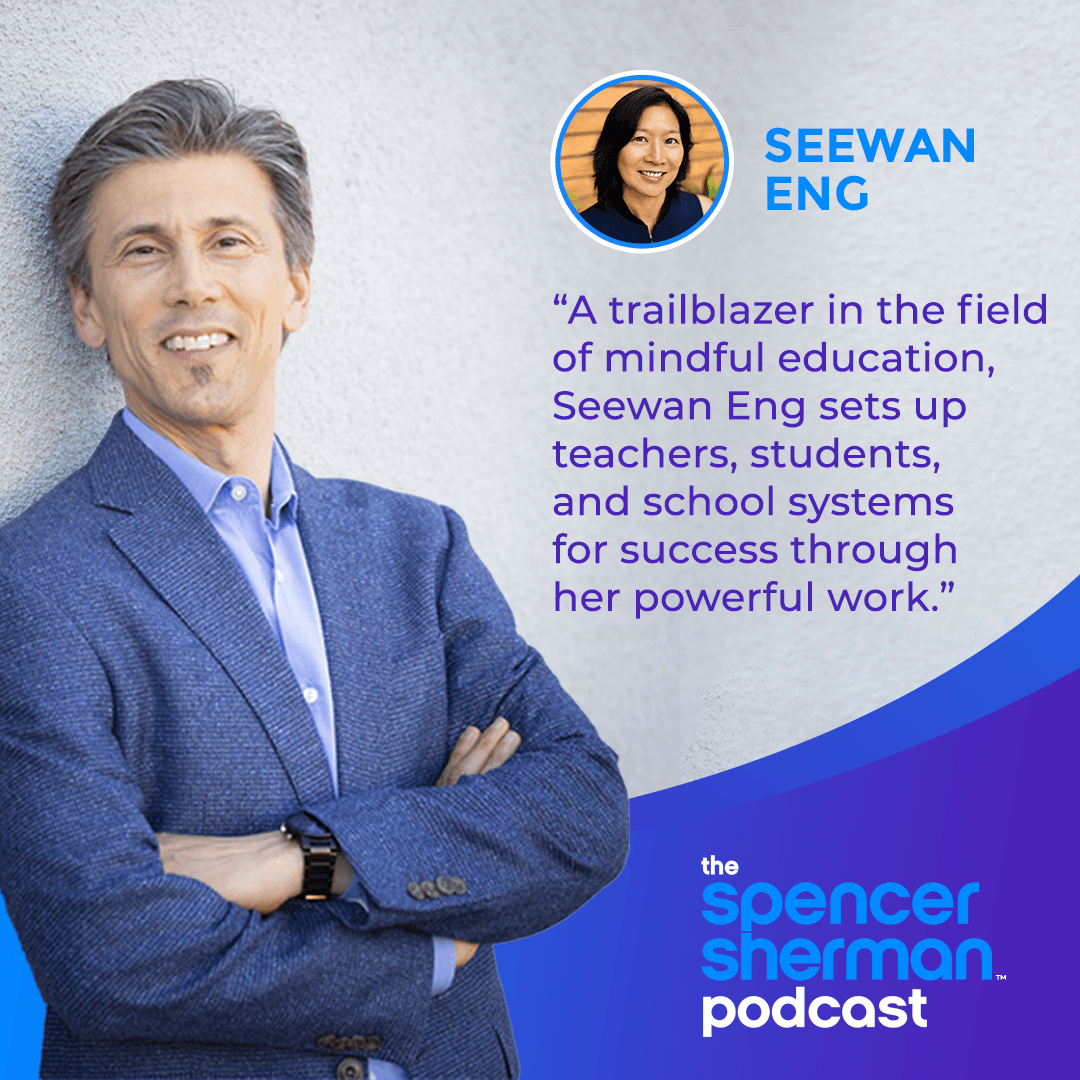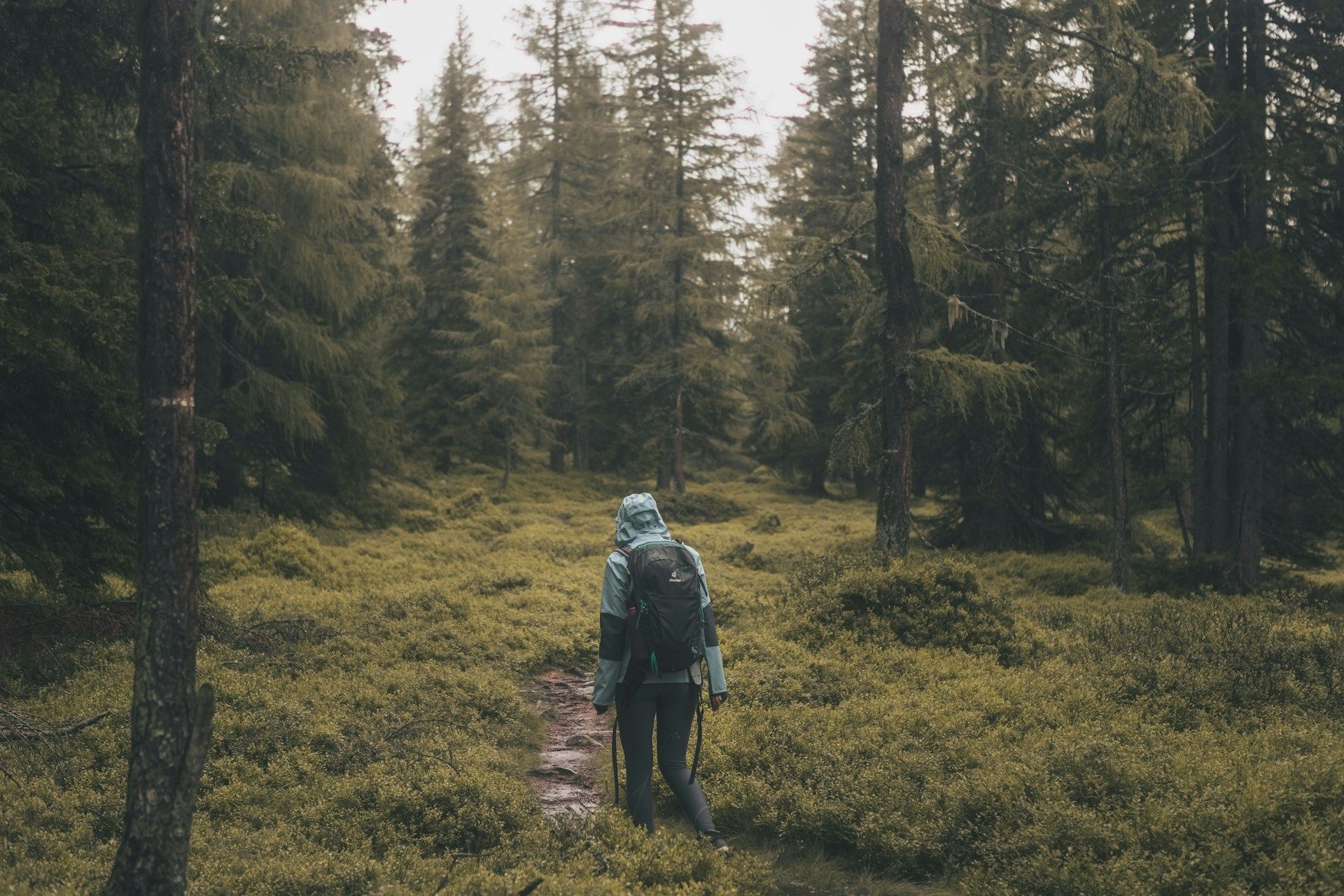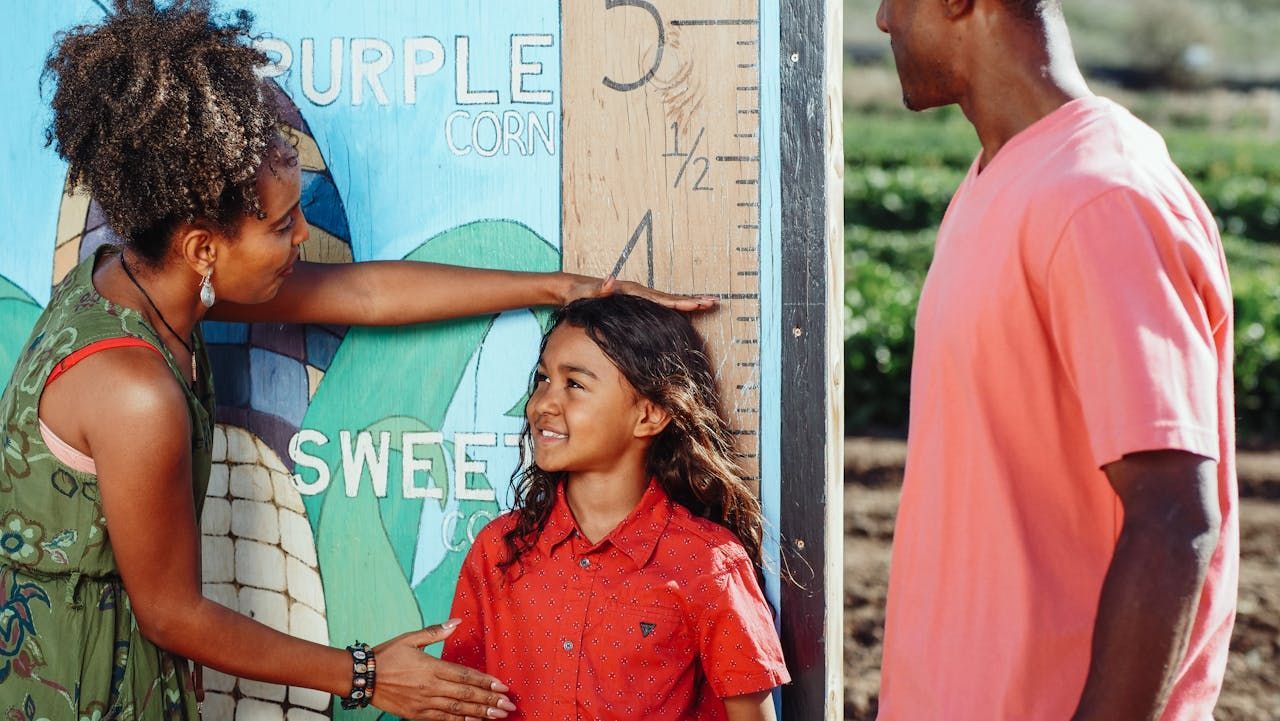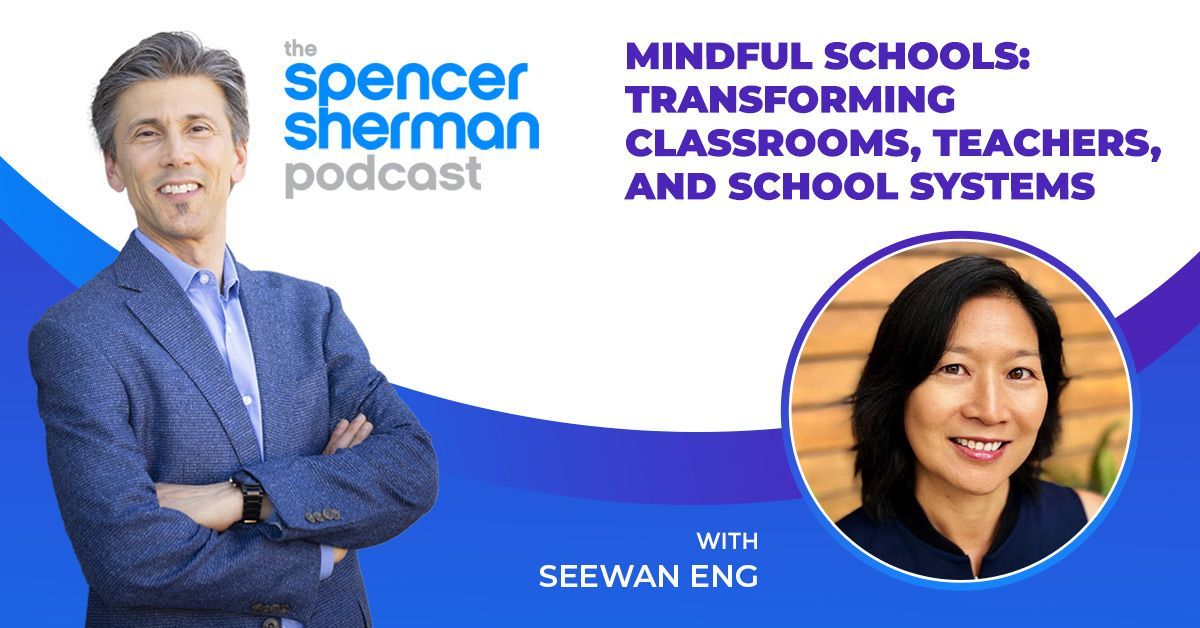
Financial success is not just about what we know, but also about how we feel. I've long been an advocate of cultivating emotional intelligence through mindfulness because I believe these practices can unlock the key to financial resilience and empower us to achieve success beyond our wildest dreams. In this episode I share an insightful conversation with Seewan Eng, the Executive Director of Mindful Schools, an education nonprofit I'm honored to serve as a board member. Seewan tells me how her team is creating more positive learning environments and transforming classrooms and teachers through mindfulness. She emphasizes that our beliefs have a significant impact on our emotional and financial well-being, regardless of how much knowledge or experience we have. Seewan also delves into the current education system and shares her thoughts on what’s going right and what’s in desperate need of change. She shares her dream for the world, and offers practical advice and valuable insights on how we can tap into the potential of every individual. Tune in and learn how mindfulness practices can benefit students, teachers, and every individual, including you.
---
Listen to the podcast here
Mindful Schools: Transforming Classrooms, Teachers, And School Systems With Seewan Eng
My work is about training our minds for success, especially financial success. What I have discovered is that our emotions and beliefs have more to do with our well-being, with our finances, regardless of how much financial knowledge or experience we have, and that it's about cultivating emotional intelligence. Here with me is Seewan Eng. She's the Executive Director of Mindful Schools. I am so excited to have you here, Seewan, to learn about how the training of Mindful Schools is affecting classrooms and teachers, and their environments. Welcome to the show, Seewan.
Thank you, Spencer. I’m so excited to be here.
My first question, as my work is about training our minds for success, I’m wondering how Mindful Schools trains the minds of teachers, students, and school systems for success. How is Mindful Schools creating environments where teachers and our children are more likely to thrive?
I think there are two parts to this that I want to go deeper into. We often say that mindfulness is a simple yet revolutionary practice, I hear this in other sectors as it relates to education, specifically how mindfulness empowers individuals. The connection to how mindfulness can intentionally empower communities is where my passion lies.
For many of us who practice mindfulness, we can immediately name the impact of this experience at a very personal and visceral level. I can literally feel how mindfulness transforms my own human experience. It might help me see the world differently. It helps me relate to myself and others in any given moment with more kindness and curiosity. You talked about understanding your emotions and understanding your perspective. Mindfulness is often described as a superpower, giving us the ability to notice, to pause, and intentionally choose a different response and not react.
When we think about mindfulness in schools, especially in communities most impacted by toxic stress and trauma, not only are the needs amplified, but the potential for transformation is even stronger. We know this current system is unwell. We are hearing how educators are overwhelmed and overworked. They are demoralized and burned out. We know that students are experiencing stress, anxiety, depression, and alarming rates at home and at school. The pandemic has highlighted the universal need for mental health in human connection in schools.
At the same time, we are seeing how the negative impacts of COVID, the concentrated vicarious and collective trauma from related deaths and illnesses in families, prolonged staffing shortages in schools, and then the food, job, and housing insecurity in certain communities. All of this highlights a huge need to address a huge problem.
The ripple effect that a single mindful teacher can have on her students in this environment in a single day across multiple interactions is enormous, as you can imagine. We can support educators to meet what comes through that classroom door with more presence. They can be supported to put on their own oxygen mask first and then they can provide the daily doses of healing that our schools need right now. We often say an educator's regulated nervous system is the intervention.
At the same time, what I think is the mind-blowing part, the part that gets me excited when we think about mindfulness in schools, is that it's a foundational tool for building awareness and collective power as a community. Mindfulness is the prerequisite to seeing things as they are and instead of getting overwhelmed by what we see, instead of looking away, we can take action to interrupt dysfunctional social dynamics that are causing harm.
We only see the impact of an individual having a mindfulness practice. We misplaced a ton of the responsibility on individuals without addressing the fact that so much of the suffering in our world is caused by social dynamics and conscious and unconscious actions that we are taking part in a system. We are inside a system that's currently designed to concentrate power and privilege inequitably. When we don't see that, then we start to tell stories.
If educators’ nervous systems are the first intervention in delivering these daily doses of medicine, we think of healthy classroom environments and school cultures like the chance to have everyday exercise and nourishment and sunshine and rest to nurture healthy bodies. We are seeing the community learn together, not practicing mindfulness by themselves but learning to practice together to grow awareness together. They can relate and navigate conflict and differences in ways that allow for healing and connection rather than the default in the world right now, which seems to be diminishing people or boxing ourselves into polarized either/or positions.
In a mindful school, the adults in the building can hold each other accountable to make different choices with time and resources, and attention. We can rewrite the stories we tell that limit who belongs and who deserves, who's smart, and who is agency. This is what I’m talking about when I’m talking about the amazing ripple effect of mindfulness practice and community.
It might help to hear a couple of examples. Some real-life examples from the schools we partner with mindfulness, a person in a course reflected a teacher who realizes going through our course and experiencing our invitational practice that realizes pop quizzes aren't a trauma-sensitive practice. It's not about giving a pop quiz, stressing the kids out, and telling them to take a breath. It's about stopping practices that aren't trauma-sensitive. It's a principal who's creatively utilizing the money allocated for detention monitors and using that to bring on a mindfulness coordinator instead.
We have a school where a school counselor's noticing her default pattern of busying herself with work when a student doesn't initially respond to her outreach. Instead, she reflects on a moment where she's taking a breath, focuses her full attention on the student, and speaks from the heart. At that moment, it makes it possible for the student to finally open up. It's mindfulness. It's simple. It's so powerful and it's in these kinds of environments that we are seeking to create.
I love that you mentioned that being mindful of ourselves individually and then being mindful of our systems as well and the trauma as the result of individual circumstances, but also the systemic circumstances that bring on trauma. There are so many barriers to people thriving in our school systems. I think there's an analogy here to the financial world that there are systemic things in place that keep so many groups of people from thriving.
In the middle of that, too, is the interpersonal interactions. Systems can be overwhelming to think about, but it's all that work. It's personal work. That's why we call it inside-out work. It's also interpersonal work then it's about collectively making changes for the system.
I love that you are saying that we are bringing mindfulness not just to ourselves but to being mindful of everything that's going on. It's not just looking at the big system. It's also looking at ourselves individually. I love that it's both. I’m wondering if you have said it but could you reiterate how can something so simple as mindfulness, how is it that this simple practice that’s been around for thousands of years be so powerful and so applicable to our complex school systems, teachers, and students? Maybe the answer is in what I asked is that it is so complex that it’s been around for such a long time. How did it, all of a sudden, become this tool that is being utilized so powerfully in our schools?
I think it builds on what I have talked about. When you talked about complexity, it made me think of something that the pandemic ripped the scab off and forced us to reckon what the complexity. I think what mindfulness does is it gives us a chance to reframe how we see the world and what we consider success to be and well-being. Well-being becomes the center of that.
Mindfulness gives us a chance to reframe how we see the world and what we consider success to be and well-being.
It gives people real-life experience and a chance to practice two things. 1) How do we know things? 2) How do we hold space for multiple truths so that we are in the right relationship, like you said, whether it's with finances or with our own capabilities and the stories we tell about ourselves, the stories we tell about others?
One thing I have noticed in the pandemic is that we finally had room and space for some of us to be able to say things are not okay and things have not been okay for many people before the pandemic. I think there's something about maybe it was being online or moving from the classroom and back to home that you couldn't stuff emotions down.
I know this as a teacher myself that I tended to power through things. I didn't even know you don't have a body, you can't pee, you can't eat like you are running. It forced us out of this. What I think schools do a very good job of is putting things into like, “We have to put things in boxes. We have to track and we have to sort and we have to move things around.” There are containers.
I think mindfulness in the current environment and what we are feeling has been around in schools for a little while, but now the spotlight on, “What is this feeling in my body? I can't ignore this and push this down anymore.” What I’m seeing in some schools that have, we have been doing social learning. It’s a concept in programs in schools.
This relates even to like facilitating conflict resolution and resolution in the workplace. We often jump to cognitive and executive functioning strategies before we are fully aware of what's going on in our bodies. It doesn't get to work as a strategy and we go through the motions and we wonder why we can't get past an initial hurt or the conflict remains unresolved or we are impasse.
I think what mindfulness does, it's a simple tool that lets us be aware and understands that emotions are not a language that we have been trained to understand because of the way our society is. If you don't know how you are feeling and without being grounded in understanding what emotions and states feel like in their bodies, then it's hard to jump to the cognitive steps you are supposed to do.
What does it feel like to be open, curious, and inviting? What does it feel like to be defensive or ashamed and not use them as words and check boxes but to know this in your own body? The quickening in my stomach or the faster beating of my heart or how my throat or the hair's rising on the back of my neck. Schools train you to bypass this information and keep going and our minds go straight then to being reactionary or protective or that fight or flight mode.
That's why it's easy to default towards scarcity or not enough mindsets as much as they impact the financial or they are huge in education. We have to undo this. When we think we know something in our brains and we have heard it many times that we shouldn't be thinking this way, it's different from recognizing the information in your body. I don’t know if that answered the question, but it's a complex world and it's an easy entry point.
What I hear you saying is that our schools have focused on making our kids intelligent but not necessarily emotionally intelligent. If you don't focus on emotional intelligence, then you have so many of us that are feeling trauma, feeling not able to learn because we are stressed, we are traumatized, and there's such a thing as money trauma also in our lives that I’m becoming more aware of.
How do you go forward? How do you understand the math problem that the teacher's putting up on the board when you are feeling this stress come on either from home life or because you have these ideas in your mind that math is something you can't do? That awareness feels like it's the precursor to any intervention or success that a child might have.
That's a great example. How does shame feel in a body or that I’m not good enough? To recognize that first and then also as a teacher to recognize that these might be things that are happening and take a step back and not to interpret a facial expression or not a willingness to engage as something else. It’s being attuned to meeting the moment and seeing your students and then teaching students and all of us to remember that we all have bodies and these bodies know things and they are telling us things and we should listen and then we should instead of stuffing them down and then trying to focus on the story.
We see this in the adult world too. When people are trying to get ideas across to an audience and that audience is not with you, you need to recognize what's happening in the room. Maybe it's not the way you are communicating. Maybe you need to address the emotions that are in the room first before you go. That's so important. I have learned in my practice that when I’m with clients, that client, as you mentioned, the emotion of shame is such a common emotion around finances. If I don't address that, they might not hear anything that I have to say. No matter how pretty my slides are, they might not get any of it if they are feeling this trauma of shame at that moment.
I love what you are doing and I know you have trained over 50,000 teachers in this country. That's amazing that Mindful Schools have done all this. Maybe you can give us a sense of what's possible because you have done such effective work. You have made such a difference in so many school systems with so many teachers and students. What's possible? What's your dream? What if this nonprofit of mindful schools is able to raise more and more resources? What would you do if you had a lot more resources? What's the potential of what an organization like mindful schools could do for the world?
I can feel the quickening in my heart with that question because I feel a lot of purpose and a lot of hope and I also want to be accountable. I know that we are in an interesting world and an interesting moment. We are trying to meet it and I think we are going to have to do some things differently. We are already doing some of them. Whatever I’m going to share in this answer, I’m partly putting this out in the world so that we manifest it because I’m that idea of what if we had unlimited resources or even more resources.
We're in an interesting world and an interesting moment.
You can answer the question as if with your current resources with more resources. I’d love to hear it all.
Thanks for that permission to dream. My dream is for all children to learn in mindful schools, that center on healing, hope, growth, and liberation. My dream is for our work also to be connected to this intergenerational movement for communities rooted in equity, justice, and love. It's not about our little nonprofit. This is a much bigger piece of the movement and how we see the world.
For that reason, it's not about the numbers of individuals we train or the number of mindfulness lessons we get out into the world, although those have an impact too. It's about connecting our efforts to culture change and making it possible for schools to center wellness. We were talking about systems change and nurturing communities of learners who thrive and inspire future generations of learners and leaders and teachers and get where this is going with education.
To make this dream real, mindful schools, as you said, have already been making a huge impact and we are also thinking about how to double down on that. By 2019 we had already reached over 50,000 educator milestone of educators mostly through the online courses that we pioneered in 2013. Since then, we have been asking ourselves some tough questions per those insights around systems change and the relationship between that and individual classrooms and school change.
We are proud of our reach and we are thinking about how we reach not only individual teachers moving through our courses but how we can start to see the schools as the unit of change and how our team's expertise with coaching and guiding teams can be leveraged to build the capacity of leadership and a strong bench at the school. I’m going to say this for the first time here out loud, so hopefully, if my team hears this, they won't be freaking out. Our current plan is to put us on track to start to measure and count to how we can engage and support over a thousand schools each year by 2025.
Beyond counting individuals, and obviously, each school has many educators in it, but to think about transforming the schools. We know this can happen only if we do more than the online courses, which are amazing and great, might have gotten us this far. We plan to add workshops, professional development, virtual retreats to deepen personal practice and keep that going, and tailored coaching and consultation.
That's the baseline. That's what we are on track to do if everything goes according to plan. If we were to rip that open and if we had tons more money, I think it's not like multiplying what we do, and then by the factor of how much money that comes in that we could like add that many more schools. I think we would double down on being part of a movement working for systems change and thinking about how we partner with related systems that touch schools.
Imagine supporting teacher education systems. We have a strong, healthy pipeline of mindful college students preparing to be mindful teachers. I know our board chair has a bold vision to partner with historically black colleges and universities. I have a personal passion from my startup charter school days to create schools. How amazing if our faculty got to run a lab school where they could return to teaching and teaching teachers? This is pairing up with teacher ed.
There are so many adjacent systems we can partner with to make sure that we are centering wellness. I’m thinking of school programs, early childhood programs, parent universities, or full-service community schools where we are integrating mindfulness and mental health support for all family members. That's why I have a little fluttering in my heart. That's a big vision of not more schools, more teachers. It's like how do we wrap our arms around students and families and center wellness? I think schools are the hub of this and it's adjacent to so many other systems.
I’m feeling very excited and very enrolled in what you are saying. It sounds amazing. Why not bring this to so many aspects of education including, as you said, preparing college students to become educators? How do we do that in a much more effective way where they are going to learn some of these tools before they even enter the school systems? I think it’s wonderful. I love this. There's the power of what you have created through something very simple. Something amazing has happened, it sounds like. Is there maybe one other example you can give us of a school that has transformed as a result of bringing mindfulness to it?
There are so many different intersections. Part of the beauty of the model is that this is going to look different at every school for how the community defines wellness. It's not something we can mandate. That's the other thing. Working in schools for a long time since, people have been down the road of like, “We are rolling out this program. Everyone's doing this training.” This doesn't work for mindfulness. You wouldn't get your first foot in the door doing this.
It's hard to come up with one school because every school's so different. We have been working in a district that is thinking about how we seed individual teams and then this looks different at every school. In one school, it could be the team of school counselors and in another team, it's a grade level, or in another, we are thinking about the person who's responsible for instructional coaching and how we make sure that teachers are teaching mindfully.
In my head, I can see all these schools and all the different players and as I said, it's an inside-out change starting from where you have power and already this curiosity and movement. As I said, mindfulness, it's not like coming outside in. In every school that I have been to and I have been in lots of classrooms, and observed lots of teachers teaching, there are always elements of mindfulness at a school and in a classroom and we need to shine a spotlight on that and build on that. It's inherently in us and I think that's another message that we have to counteract.
You are helping us all become aware of what's already true and what's already so in our bodies, helping us become aware of our own emotional states and how that impacts our ability to be effective teachers, students, or administrators.
It's listening to each school to hear their story of wellness and mindfulness and you don't even have to use the word mindfulness as the entry point. An important thing to think about is people try to imagine what this looks like at their own school. I think the questions that you ask, you don't even have to start with the word mindfulness.
I love bringing the ideas of nonprofits and philanthropic ideas to the public because I’m always sensing that so many of us are looking for places to employ our charitable dollars. If we often default to religion and our alma maters, our colleges, I always wonder what's beyond that. I’m wondering if maybe you can give us a sense of what's possible if someone was to want to make a charitable gift, an investment in mindful schools, let's say. What might it cost to train a teacher? Maybe you can give us a sense of what one could accomplish by making a gift.
Thanks for opening that door. I’m going to start with a little preamble of what I think is important when I think about investing in the world and our society. Working at the intersection of education and personal transformation and systems change has been an amazing personal professional career for me. It feels powerful to me and it makes me get up in the morning because you can feel tangible impacts now while you also are seeing how you are planting seeds and preparing the soil for a brighter future for our world.
Learning and healing are fundamentally part of the human experience. We know that the world puts up too many roadblocks and stacks the odds against too many young people and then to create a thriving world, we all like sense is possible. We need people to invest in the systems, whether it's their labor or their resources, to help make these big shifts in how we live and how we be together. I say this because I want to remind that the state of the world is such that people are in a perpetual state of survival. Too many people are. It's a broken system where they are not living to their fullest potential and we lose out on these gifts at great cost to all of us.
I think that so much around my work as well that we are missing so much potential in our people in this world and our human beings because of systemic sures in place and the lack of emotional awareness training. There's so much that we are not capturing. We are leaving a lot of people out of the equation and we are minimizing their potential, as you are saying.
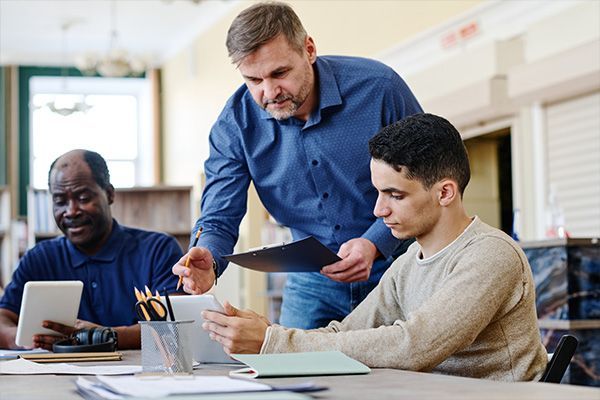
It would be great to envision a world where we can funnel the resources more effectively and the PTA doesn't have to hold a big sale to pull together the tuition for one teacher to do this training and that we can think a little bit more boldly. I do. I throw that question out before anyone thinks about how they think about where they invest in terms of societal infrastructure.
What does it say about our current system or education system when we don't educate everyone to their highest potential? What does it say about our society and our values of the country? I think we don't want to look away or think it's someone else's job to do this. I think we can gather the resources. Part of the resources could be champions and storytelling and people making connections. It's not even yourself giving resources but telling the story of things that are working. The system's not going to change itself on its own. We need the broad support of people working in the community.
There's such potential with the work you are doing because, as I see in the current labor market, it's so hard to hire people and to hire skilled people nowadays is so hard. We need you, Seewan. We need mindful schools. We need adults and thriving adults come from thriving children.
I didn't answer your question about what an investment yields, so I think I should do that. We are a small education nonprofit with a national reach. We had small local grassroots beginnings and we figured out how to have this outside impact building capacity of teachers and growing mindfulness from the inside out. Not just mindful schools. I’m going to advertise other nonprofits working to do their work. Anything that amplifies and supports their ability to do work is going to yield some giant outsides impact.
What it means for Mindful Schools, it's been important for me to make sure they are a model that offers various entry points that allow for change to begin. A single teacher could do our training but also offer, and this has been our focus on deeper pathways for more robust and long-term investment in school teams for the bigger effect.
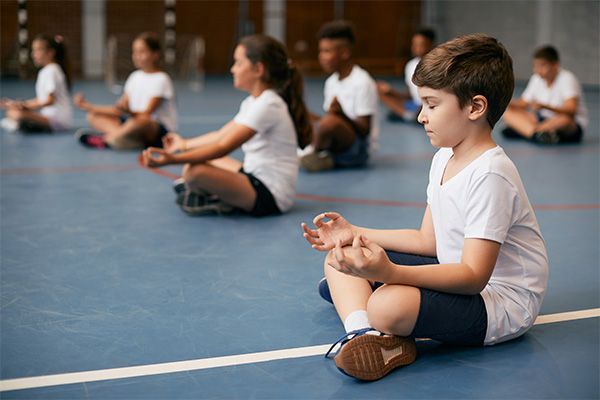
On one hand, for about $1,000 per teacher, we can provide the foundational training in mindfulness and support them to be able to teach our mindfulness curriculum and then get personal guidance and touchpoints along the way. That's like the basic calculator. That's easy to get started if you only have 1, 2, or 3 teachers who want to get started to be trailblazers and know that a bigger investment is coming with school leadership.
For schools that are ready to offer a more robust collective learning experience, we do offer packages that include professional development and options for more guide-tailored guidance and coaching, and consultation. These range from $10,000 to $35,000 a year for a school. As you can imagine, these investments can pay out huge dividends for the capacity building to come inside that building for many years.
One of my things about money is not being vague and being willing to talk about a taboo topic. I love that you threw out some real numbers there. That's wonderful. I was wondering if we could bring it back to the personal. When I think back to my schooling, we can all do this if you are reading, I invite everyone to bring to mind a teacher who made a difference with you.
Maybe somebody who got across to you that you were okay when you didn't think you were okay and you didn't think you fit in. Some teacher, either with what she said or with her gaze at you was able to transmit to you that you were included, that you were welcome when you were in elementary school. I’m thinking back to my teacher and she definitely did that for me.
I did not feel like I fit in. I was smaller than everyone else. I was younger-looking than everybody else. Such a thing as possible in second grade. She made me feel okay. I’m wondering if is there a sense that you have. It was a pivotal moment for me, I sense, and I think for so many of us. There was a teacher or maybe several teachers who put us on a better course. I think that's so important. I’m wondering if you have been able to identify what is the common denominator of these memorable teachers. Is there a way we can, through Mindful Schools, maybe produce more of these teachers who are able to put us on a much more healthy path in our lives?
I’m flashing back to my own second grade. Mrs. Thompson, my second-grade teacher, is that person for me, too in the line of a long list of teachers who have been there to make sure I felt seen and supported at critical moments in my life. Mindful Schools, we use a framework called the domains of mindful teaching that gets into the nuts and bolts and rigorous competencies of what we mean by a mindful teacher, what it looks like, and what it feels like.
I think I’m going to pull back. I ask this question a lot and I hear a lot of people's stories. The common throughline of these sliding door moments where a teacher saw someone at a critical moment and something could have gone sideways or is the moment where everything opened up and the world got bigger. It comes down to three things. This is why mindfulness is a simple but powerful way to get at these things.
One is awareness and presence. There's so much going on. There's so much activity and busy work and decisions in a classroom to make. The self-awareness and ability to regulate and be present with a student in these critical moments where either where you can not see it or not address it or not get frozen and not want to deal with things, those moments matter. How you are addressing that, that takes a certain amount of awareness and presence and not just knee-jerk reactions.
The self-awareness and ability to regulate and be present with a student in these critical moments matter. How you are addressing that takes a certain amount of awareness and presence and not just knee-jerk reactions.
I feel like that's what happened with my teacher. She was able to sense something in me. She was able to sense that I was not totally with the rest of the kids or catching on completely. She did an intervention with me, which I think that was the thing that worked. She started praising every paper I handed in. Somehow that got me to feel like I could do the work that I could fit in. I started doing that much better work as a result of all that. That's how I remember it. It was a real turning point for me.
That fed into my next point. I think a teacher knows students and thinks that's the primary thing that they are supposed to know about. Sometimes we do this content thing like what you were saying about finances and if you know all these things that makes you smart. It's not. It's knowing students and their focus is seeing students, their brilliance, and their strength.
I don't think she was faking whatever praise. She was finding the things that you were good at. She's taking responsibility to unlock that genius and to amplify that. This, in combination with awareness and presence, does take the intentional design of how you teach your classroom, and the interactions to be able to make sure that learning is about connecting with the student, not just the content.
I love that learning is about connecting with the student. I felt that in my body when you said that. That is one of the most powerful things we can give our kids. It’s that connection with the teacher. Seewan, this is amazing. I have known you for several years now and sometimes I think you downplay how magical and incredible this work that you are doing is, and maybe that's part of being the executive director. You can't be bragging too much about it, but I think it's transformational work. I feel so grateful that you are doing this work that is helping all of us, that's transforming our kids, our schools, and our teachers, producing better future leaders for our world. Thank you so much, Seewan, for all that you do.
Thank you for this opportunity. I appreciated this chance to talk about our work and to share it more publicly. Thank you for that.
We have been with Seewan Eng. She's the Executive Director of Mindful Schools. It's MindfulSchools.org if you want to reach out to her. Thank you so much, Seewan, for being here.
Thank you.
Important Links
HACK YOUR
#FUTURE
Improve your skills by joining our webinar about coding, biotech, and the future of startups.
WEBINAR STARTS IN
Contact Us
SHARE THIS POST
The road to financial freedom is easier when you share the journey. By signing up for Spencer’s newsletter, you’re joining a growing community of people who’ve found their way to “Enough.”


